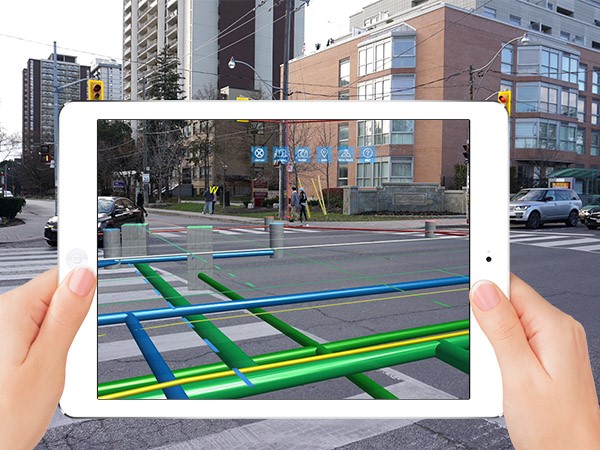Accurate underground utility mapping is an important part of any construction or infrastructure development project. Professionals can effectively prevent accidents, mitigate the risks of project delays, and avoid unnecessary expense by knowing the exact location of underground infrastructure like water pipes, electrical lines, gas lines, or sewage lines before they start digging. Dangerous consequences are often faced by teams who do not spend time and effort on precise mapping, as striking these utilities can be hazardous and costly.
Technology has advanced to significantly improve the precision and efficiency of underground utility mapping. Solutions like Ground Penetrating Radar (GPR) and electromagnetic locators help professionals obtain a detailed and highly accurate idea of the location of subsurface utilities. These solutions provide real-time data and comprehensive maps, making it easier for construction teams to plan and execute their projects safely and efficiently.
As the ideal underground utility mapping software, PointMan is distinctive. It offers an intuitive interface for real-time data collecting and display along with the integration of cutting edge mapping technology. PointMan helps a variety of industries manage their subterranean infrastructure with confidence and convenience by guaranteeing that all utility information is correct and easily accessible.
Importance of accurate underground utility mapping
Precision utility mapping is absolutely important to ensure that construction projects are executed with safety, efficiency, and regulatory compliance. Precise utility mapping helps construction teams obtain detailed information about where utility lines are located beneath the ground. Thai helps them make sure that gas pipes, electrical lines, or other hazardous utilities are not hit during digging.
Severe consequences are often met by teams who do not possess accurate utility data. From gas leaks and electrical outages to water line ruptures and sewage line breaks, the potential hazards are numerous. All of them have the potential to pose significant risks to life and the environment. From a financial standpoint, these errors can cause budgets to skyrocket with costly repairs, project delays, and hefty fines from regulatory bodies for non-compliance.
Another important factor is efficiency. By averting unforeseen roadblocks and cutting down on downtime, accurate mapping guarantees that projects proceed smoothly and on schedule. It enables improved project stakeholder collaboration and planning, which results in more efficient operations and cost savings.
To mitigate these risks and enhance project outcomes, advanced underground utility mapping software is essential. This software provides precise, real-time data, enabling better decision-making and ensuring that all utility information is up-to-date and accessible. By investing in advanced mapping solutions, companies can significantly improve safety, efficiency, and regulatory compliance in their projects.
Key features of modern underground utility mapping software
Advanced detection tools
Geographic Information Systems (GIS), electromagnetic locators, and ground penetrating radar (GPR) are examples of sophisticated detecting instruments that are integrated into modern underground utility mapping software. GPR provides precise subsurface images by using radar waves to search for metallic and non-metallic utilities. Accurate utility maps require the visualization and analysis of spatial data, which GIS facilitates. For the purpose of finding the depth of subterranean metallic constructions, electromagnetic locators are indispensable.
Together, these instruments provide a thorough understanding of the subterranean infrastructure. Regardless of the material, they aid in the identification of a variety of utilities, including pipelines, wires, and storage tanks. For building projects to remain safe and to avoid damage during excavation, this thorough detecting capability is essential.
Real-time data access
Having real-time access to utility data is crucial for all stakeholders involved in a construction project. Real-time data allows project managers, engineers, and workers to make informed decisions quickly, reducing the likelihood of errors and delays.
Cloud-based solutions facilitate this real-time access by storing utility data online, making it accessible from anywhere, at any time. Stakeholders can log in to the cloud platform and view the latest updates, maps, and reports. This seamless access and collaboration ensure that everyone is on the same page, which enhances communication and efficiency across the project.
Comprehensive data storage
There are many benefits to having all utility mapping data stored in a digitized, central format. By removing the inaccuracies and inconsistencies that are frequently present in paper-based records, it first increases data accuracy. Accurate recording and easy retrieval of all updates and modifications are guaranteed via digital storage.
Also, centralized data storage lowers the possibility of misunderstandings. Having access to the same data reduces miscommunication and guarantees that everyone is working with the most recent information when all stakeholders are involved. Additionally, by streamlining data management, this centralized solution facilitates the organization, searching, and retrieval of utility records as needed.
Overall, the integration of advanced detection tools, real-time data access, and comprehensive data storage in modern underground utilities mapping solution greatly enhances the efficiency and accuracy of utility mapping processes. These features collectively contribute to safer, more efficient, and compliant construction projects.
Streamlining the mapping process
- Coordination and planning: When it comes to mapping subsurface utilities, having a well-defined plan is essential. Before any digging is done, all utility locations must be mapped out and any risks must be understood. Here, mapping software is essential since it offers comprehensive project insights. It assists planners in precisely evaluating hazards and guarantees that all aspects of the subterranean infrastructure are taken into consideration. By taking this proactive approach, building is less unexpected, saving time and avoiding expensive errors.
- Using the right tools: Selecting the appropriate equipment is necessary for accurate utility mapping. Accurately finding subterranean utilities depends on tools like electromagnetic locators and ground penetrating radar (GPR). By increasing the effectiveness of these tools, integrated software is a complement. It makes it possible to easily combine data from many instruments into a coherent map, increasing precision and dependability. By doing this, contractors may plan their excavations safely and effectively because they will have access to the most up-to-date information.
- Digital workflows: Digital workflows, which digitize and centralize data storage, transform the mapping process. All mapping data is kept online for real-time access and management by stakeholders. Teams and stakeholders may work together more easily with this capacity, which improves coordination and reduces mistakes. Automated procedures also increase productivity by eliminating manual labor and guaranteeing data consistency. Digital workflows simplify the mapping process overall, increasing its dependability and efficiency for construction projects.
PointMan: The ideal underground utility mapping software
PointMan is the ultimate underground utilities mapping solution, designed to meet the diverse needs of various industries. Here’s why PointMan stands out:
- Robust detection tools: PointMan integrates cutting-edge technology for precise detection of underground utilities. From Ground Penetrating Radar (GPR) to electromagnetic locators, it ensures accurate mapping of both metallic and non-metallic utilities.
- Real-time collaboration: Facilitating seamless teamwork, PointMan enables instant access and sharing of critical data among project stakeholders. This real-time collaboration streamlines decision-making and enhances project efficiency.
- Comprehensive data management: PointMan centralizes all mapping data in a secure, digital platform. This ensures data accuracy, reduces errors, and simplifies compliance with regulatory requirements.
Keep an eye for more latest news & updates on Tribune Tribune!




